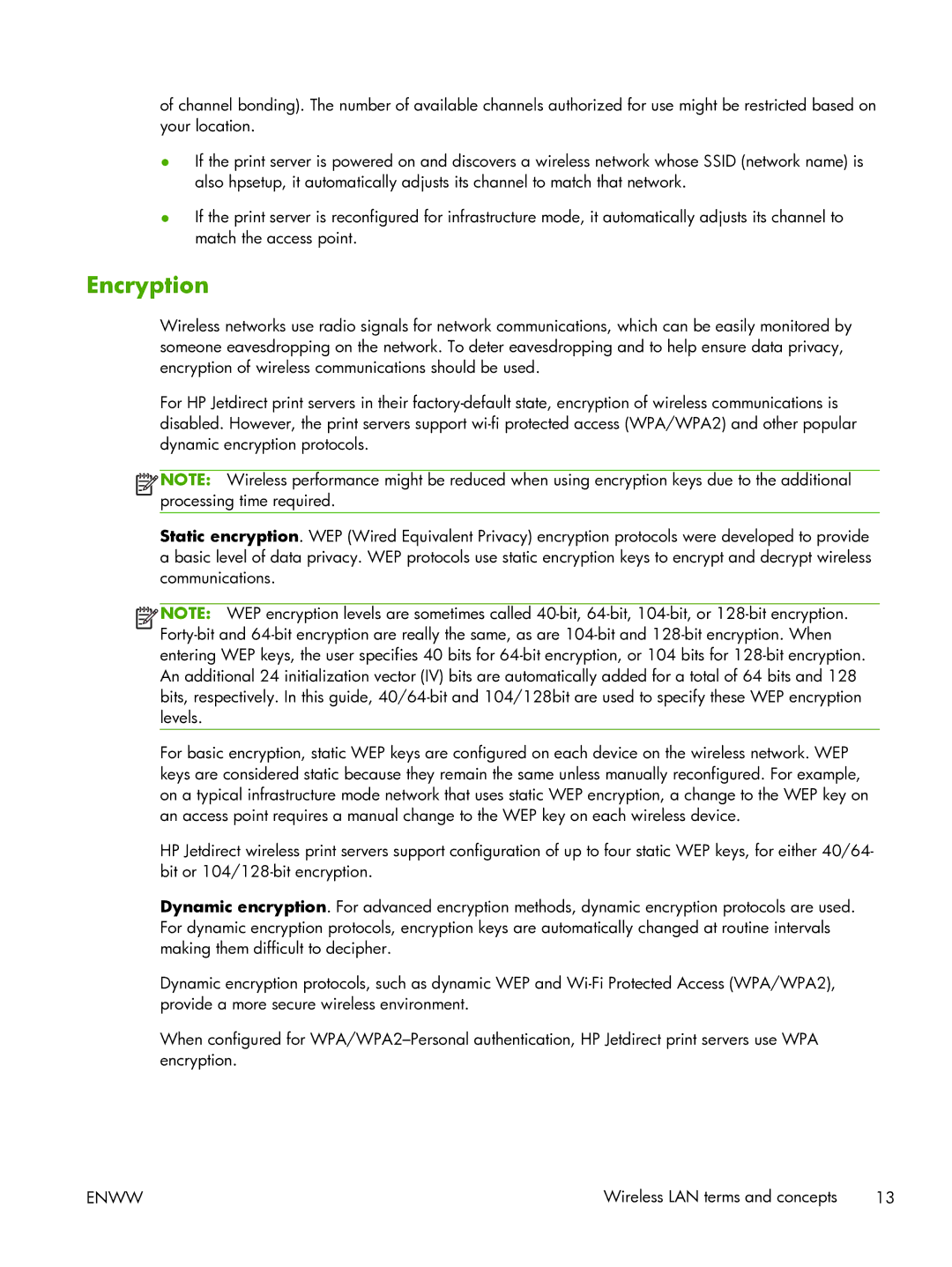
of channel bonding). The number of available channels authorized for use might be restricted based on your location.
●If the print server is powered on and discovers a wireless network whose SSID (network name) is also hpsetup, it automatically adjusts its channel to match that network.
●If the print server is reconfigured for infrastructure mode, it automatically adjusts its channel to match the access point.
Encryption
Wireless networks use radio signals for network communications, which can be easily monitored by someone eavesdropping on the network. To deter eavesdropping and to help ensure data privacy, encryption of wireless communications should be used.
For HP Jetdirect print servers in their
![]()
![]()
![]() NOTE: Wireless performance might be reduced when using encryption keys due to the additional processing time required.
NOTE: Wireless performance might be reduced when using encryption keys due to the additional processing time required.
Static encryption. WEP (Wired Equivalent Privacy) encryption protocols were developed to provide a basic level of data privacy. WEP protocols use static encryption keys to encrypt and decrypt wireless communications.
![]()
![]()
![]() NOTE: WEP encryption levels are sometimes called
NOTE: WEP encryption levels are sometimes called
For basic encryption, static WEP keys are configured on each device on the wireless network. WEP keys are considered static because they remain the same unless manually reconfigured. For example, on a typical infrastructure mode network that uses static WEP encryption, a change to the WEP key on an access point requires a manual change to the WEP key on each wireless device.
HP Jetdirect wireless print servers support configuration of up to four static WEP keys, for either 40/64- bit or
Dynamic encryption. For advanced encryption methods, dynamic encryption protocols are used. For dynamic encryption protocols, encryption keys are automatically changed at routine intervals making them difficult to decipher.
Dynamic encryption protocols, such as dynamic WEP and
When configured for
ENWW | Wireless LAN terms and concepts 13 |
